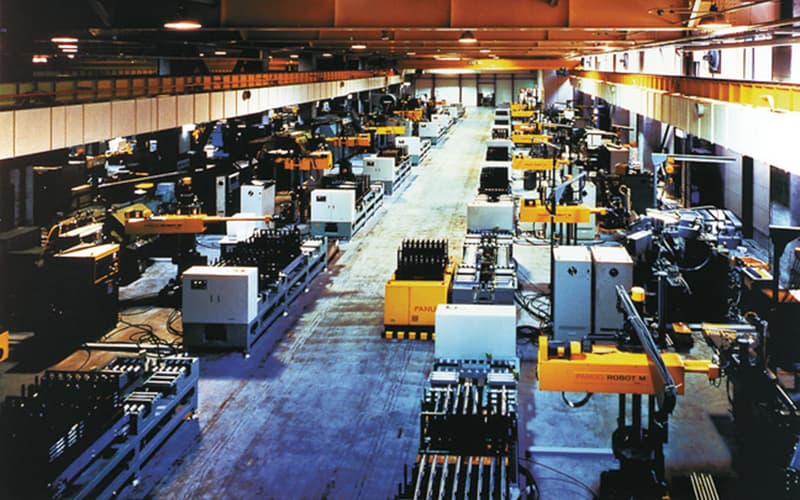A Photographic History of DaifukuBringing a Factory to Life: Constructing the Logistics System at a World Class Automated Factory

The term “factory automation," became popular in the early 1980s as a way to describe the drive toward automation and improved efficiency in the manufacturing industry. This drive brought about various efforts to make factories completely automated, including the combining of industrial robots, machine tools, and other manufacturing equipment with material handling systems such as AS/RSs and AGVs, and controlling these systems using computers.
Taking advantage of this trend, Daifuku helped FANUC complete its new factory—considered at the time to be one of the world’s most advanced automation-based factories—in 1982 in the foothills of Mt. Fuji. This two-story factory for mass production of machine tool motors covered 13,800 square meters and included machining on the first floor and assembly on the second.
The first and second floors were connected by AS/RSs, which were used not only to store materials and parts but also to supply workpieces to the machining floor, temporarily store machined workpieces, supply parts to the assembly floor, and store finished products. In other words, the AS/RSs served as regulating valves for the factory. AGVs with pallet units were used for transportation between the AS/RSs and factory cells (units consisting of industrial robots and machine tools). Automated systems were installed across the factory, from receiving to shipping, leading to impressive automation rates including more than 90% for machining and more than 65% for assembly. With just 60 employees, FANUC was able to use automation to achieve a high level of productivity, producing 10,000 motors every month.
The increasing severity of labor shortages in recent years has resulted in material handling systems being used in an even wider range of areas. Daifuku is dedicated to taking on ever more challenging next-generation factory automation projects, drawing on the company’s long history of automation in a wide range of production sites.
- * This article is based on the content of “Hini Arata Nari: 50 Years of Daifuku History,” “Daifuku Group 70th Anniversary Magazine: Material Handling and Beyond,” and other documents.
